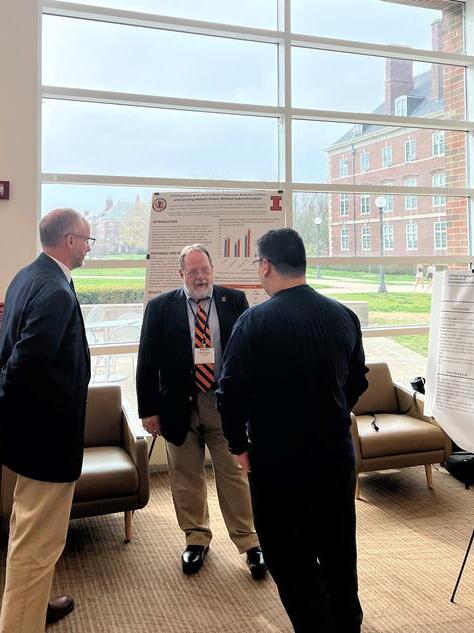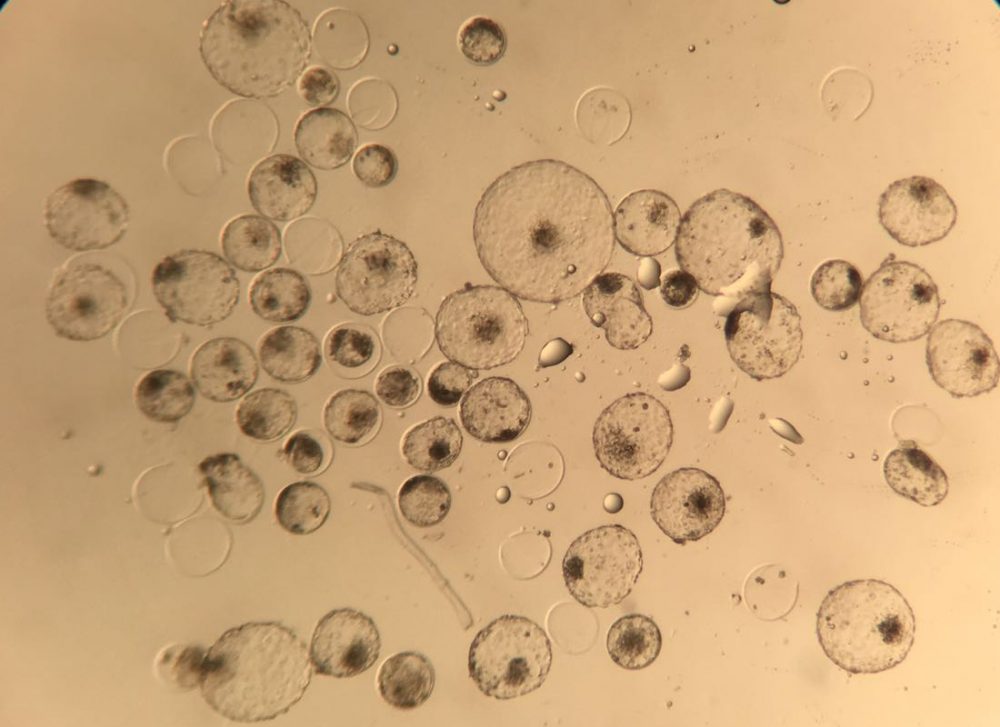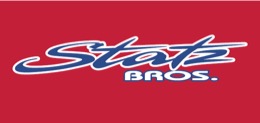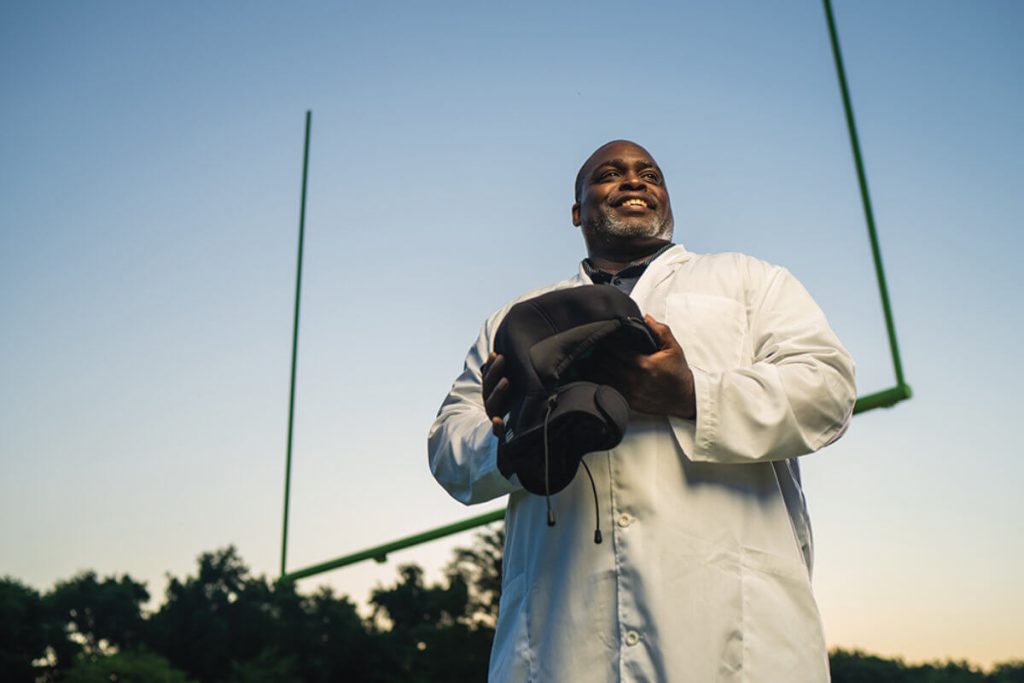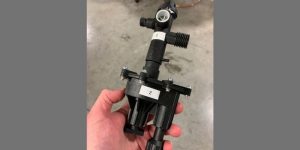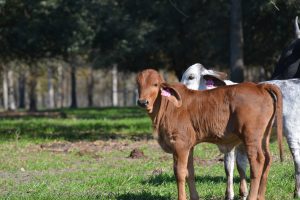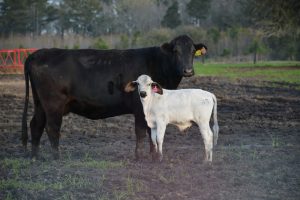
3/4 Gyr calf with Holstein cow at Chessie Creek Farm
Photo by Matt Wheeler
By Lauren Quinn 217-300-2435
SOURCES
Dr. Matthew B. Wheeler 217-333-2239
March 8, 2021
URBANA, Ill. – What if, in the next five to 10 years, we could double or triple milk and meat availability in developing countries without converting more land to cattle production? Millions of hunger-related deaths and nutritional deficiencies could be prevented, giving farmers and families a real shot at prosperity.
It’s not a pipe dream. Researchers leading the University of Illinois-Chessie Creek Farm Tropical-Adapted Cattle Project have successfully bred animals that thrive in hot climates and produce 10 times the milk of indigenous breeds.
Getting to this point took some luck, a great deal of effort, and a multi-million dollar investment, but the plan is to simply give elite tropical-adapted embryos away to developing countries. It’s all part of a commitment by the College of Agricultural, Consumer and Environmental Sciences (ACES) at Illinois to help feed the world by 2050.
“In many parts of the world, owning cattle means progressing out of poverty. The more cattle people have, the greater their wealth. But more cattle can impact wildlife populations, which can be important for the environment and tourism. So we thought, let’s provide the milk production of 10 cows in one,” says Matthew Wheeler, project leader and professor in the Department of Animal Sciences, part of the College of ACES.
In November 2020, Wheeler’s team witnessed the birth of the first U.S.-bred Girolando heifer and purebred Brazilian Gyr bull calves at Chessie Creek Farms in Walterboro, South Carolina. About 100 more Girolando calves are due in September.
Gyr cattle, with their humps, recurved horns, and drooping ears, are indigenous to tropical locales around the world. Unlike Holsteins, the most common and highest-producing dairy breed in the world, Gyrs don’t mind the heat, but they only produce about 15% of what Holsteins deliver in each lactation.
Girolandos bring the best of the two breeds together. Wheeler’s team breeds them by repeatedly mating Holstein and Gyr parents (and intermediate hybrids), resulting in animals that are five-eighths Holstein and three-eighths Gyr. Wheeler says his first Girolando heifer will be producing milk in 2022, and he expects yields at least 10 times that of Gyrs in their native range.
Girolandos are common in Brazil, but because of endemic disease issues, they can’t be exported to other countries.
“If you’re going to distribute them to the rest of the world, somebody had to breed them in a country that’s high health status. Why not us?” Wheeler says. “At Illinois, we’re good at dairy. Somebody’s got to be the national expert in tropical dairy. Why not be audacious?”
Kim Kidwell, dean of the College of ACES, adds, “This project is an incredible example of how ACES research changes lives and captures the essence of what we do and why it matters. Matt and his team have shown great technical expertise, tenacity and heart in making high-yielding, tropical-adapted cattle a reality. I am extremely proud of their commitment to making a difference in the world by enhancing food security for people in need through amazing science.”
Realizing the potential of Girolandos for the developing world, Wheeler connected with the owner of Chessie Creek Farm, who shares Wheeler’s passion for improving lives through science.
The owner, who prefers to remain anonymous, says, “This has been an exciting and great learning experience for all involved. In the near future, we sincerely hope we will be providing high quality, low maintenance animals for developing countries. We envision that our farm will ultimately be able to produce vast quantities of embryos from these animals to feed hungry people around the world.”
In addition to building up the herd in South Carolina, Wheeler is in discussions with governments, universities, and NGOs in Latin America, Africa, and Asia to plan distribution of embryos in the next year or two.
Importantly, the team will continue to support operations on the ground after embryos are delivered, providing the know-how to transfer the embryos into indigenous cattle and follow-on expertise through calving and lactation. They’ll also assist with nutrition, animal management, future breeding, and genetic selection to ensure the long-term health and sustainability of the herds.
Wheeler says now that his team has worked out the process to develop Girolandos on U.S. soil, it should be fairly straightforward to improve other traits, such as muscle mass and marbling, for beef production in tropical hybrids. And in the future, with continued support, the project could expand to other animal production systems, including swine, sheep, and goats.
“The data resulting from the project, its analysis, and results will inform future decision-making not only for the project but the direction of food production for ‘Feed the Future’ initiatives to come in those developing countries,” Wheeler says. “Ultimately, we’re confident this work will result in greater food and income security where it’s needed most.”
To contribute to the project, contact the College of ACES Office of Advancement.
